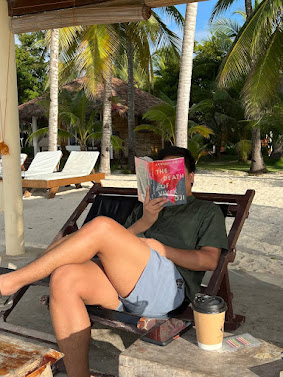Book
Sort of a Book Review | A Little Life by Hanya Yanagihara
I'm not sure what got me really interested with the novel. Goodreads provided a not-so-specific overview of the story of the four boys in New York and it was accurate, I realized, after I've read the story. Hanya Yanagihara's “A Little Life” is about the lives of four friends living in New York: JB, Willem, Malcolm, and Jude. It seemed simple enough for me when I first read what the plot was, but still, an interest and curiosity nagged at me. I think I became really interested when I heard people called this the most miserable book ever or when I found out it was 720 pages long. It became a challenge for me. But during the second (of the seven the book has) part “The Postman”, I became really invested with these New York boys, their bond, their lives, and their secrets. It no longer felt like challenge to finish it—I actually wanted to see how it would end and how everything would turn out. And I found myself flying through the pages of Yanagihara's story she shared with simplicity and clarity, but not at all short of the smallest details, and in the next three days had finished the parts three through seven.
The iconic photograph by Peter Hujar that served as the book's cover mimicked how I felt reading “A Little Life”. Some called it tragedy porn—and I thought of it as that, especially when I finished it—for Yanagihara really poured every possible tragedy to the characters, most especially to Jude St. Francis, seemingly without reason and logic. (Calling A Little Life a tragedy porn just made the Hujar photo more than fitting as it was aptly called “The Orgasmic Man”.) But really, the way I see it once I have tried my tears and snot was that Miss Yanagihara was simply trying to recreate the reality we live in: that life really owes us nothing to stop the tragedies. In fact, life is amoral and not at all sentient. Life happens and along with it, shit, too, happens. This novel probably caused my newly found pessismistic view of life.
Despite this, A Little Life had its moments of sunshine and rainbows. But such events, aptly titled The Happy Years, would only make the whole tragedy that followed suit even more heartbreaking. When people said the book was miserable, it was a clear understatement for the book is even more so.
The best thing about the novel was how fleshed out the characters were. Miss Yanagihara didn't waste any page of the 720 as she depicted every backstory, every bit of her protagonists' lives and psyche with visceral details that reading about them felt almost voyeuristic. But it made JB, Willem, Malcolm, and Jude as human as possible and it made them relatable. As a reader, we witnessed their traumas and fears, their loves and desires, and their ennui and mediocrity as they experienced it firsthand and that's the best thing a novel can do: to arouse one's empathy.
In the end, reading A Little Life was an experience. It will make you sob and cry, but it will also, at moments, make you giddy with love and excitement. This book is deeply interesting not for its length and tragedy, but for its story of four flawed human beings who are living and striving to get their goals and tried to walk past every hurdle that were thrown on their ways. That's the most human a character can be. While some would never understand Miss Yanagihara's cruelty, I still think the book was an absolutely amazing read. Would I reread it? I probably would. Sometime.
Miss Yanagihara wrote: “Friendship was witnessing another's slow drop of miseries, and long bouts of boredom, and occassional triumphs. It was feeling honored by the privilege of getting to be present for another person's most dismal moments, and knowing that you could be dismal around them in return.” In that sense, we—the readers—are all JB's, Willem's, Malcolm's, and Jude's friends.
About Me

John writes here.
Popular Posts

500-Word Story | Alexander
June 10, 2016

Reading in 2021
December 31, 2021

Sort of a Film Review | Breakfast At Tiffany's (1961)
June 10, 2016






0 Comments